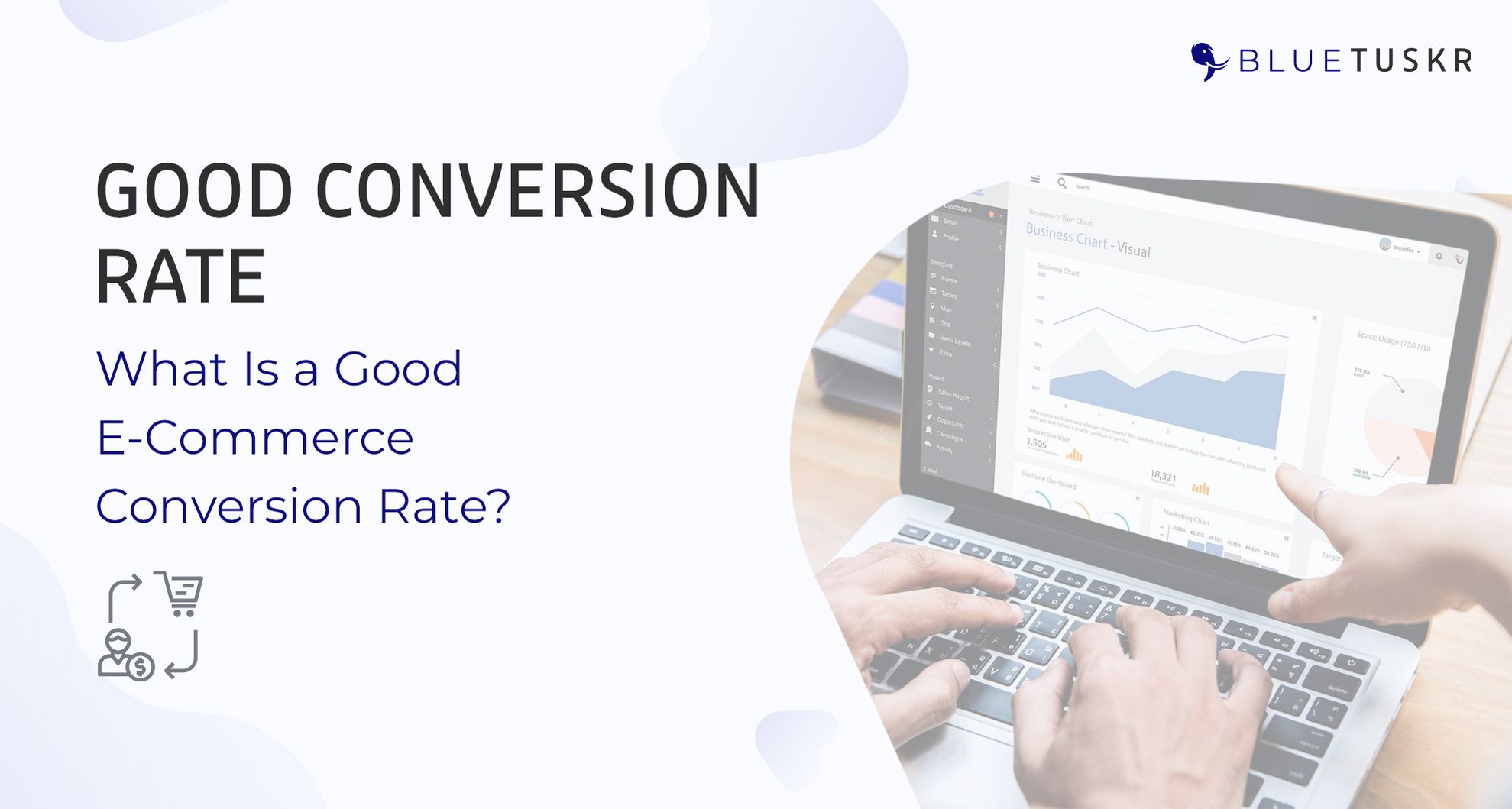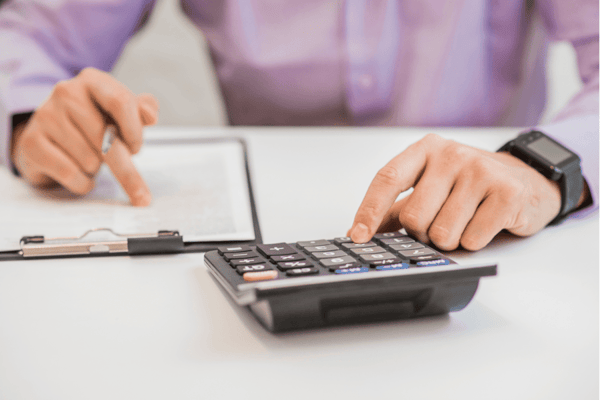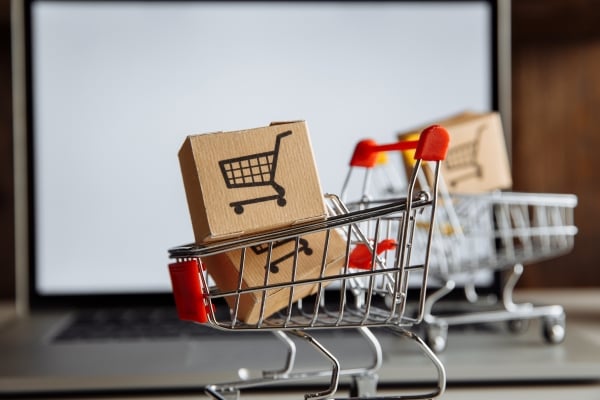
What Is a Good E-Commerce Conversion Rate?
You can quickly get lost in your attempts to improve sales without realizing that other factors could hold you back. E-commerce conversion rates depend on many things, and it is not enough to look at the number of visitors alone. We have identified a few metrics to provide insights into your eCommerce conversion rate statistics.
Digital marketing campaigns are good, but you must also pay attention to these metrics on your eCommerce website. They include the following:
Bounce Rate
E-commerce website visits give a general report on the number of people that have opened your platform. It could be from their mobile devices or PCs. Either way, there is no detail on the customer journey when they opened the site.
We will talk more about the customer journey in the sales funnel section. In the meantime, you need to know the number of visits that did not go past the landing pages—maybe they left your e-commerce website after viewing one page.
This number is what we call the bounce rate, which is an essential metric for improving eCommerce conversion rates. Content-based websites pay attention to this metric because a high value would mean visitors don’t get what they want. For eCommerce websites, it means that shoppers are less interested in what you offer.
There are several reasons for a high bounce rate; sometimes, even the best online retailers get worried. In July 2022, Apple had a bounce rate of 55.7% for consumer electronics. The average acceptable value is often between 20% and 45%.
Sometimes, a simple eCommerce website redesign can give a better user experience and reduce bounce rates. You can also feature the top-selling products more on the landing pages to keep shoppers around. A more precise solution will be finding and working on landing pages with the highest bounce rates.
Exit Rate
This metric is closely related to the bounce rate and is often mistaken for the latter. It shows the number of visitors that leave a page after visiting other pages. That means they leave the eCommerce website after getting to that page.
eCommerce websites often have several pages, including the landing page. A high exit rate is not ideal, except when the visitors reach the checkout pages. Getting to that point may give you high conversion rates.
Think of the brick-and-mortar stores with several aisles. A customer comes in and walks through several lobbies. You can tell how many leave after getting to a particular corridor.
You want them to pick up the products and reach the counter for payment. The same thing applies to the eCommerce store.
Click-through Rate
A good conversion rate begins with the click-through. This metric represents the number of people that click on ads from your digital marketing campaigns. It could be Google ads or those on social media.
Consider this metric for the overall eCommerce conversion rate if you are into digital marketing. Your ad's performance is essential for the final product purchase. Hence, you must pay attention before you pump up the customer acquisition cost.
A low click-through rate could be due to several reasons, including the following:
-
No clear call to action
-
Advertising a product to the wrong customer base, for example, promoting commercial equipment to a retiree or home appliances to a factory manager.
-
You can pull back your digital marketing ads and examine why customers don’t click on them. Sometimes, the design and content might not be persuasive enough. Ecommerce businesses are turning to AI in their content marketing strategy.
These efforts aim at increasing the clicks and, ultimately, the conversion rates. A high click-through rate means you have generated sufficient interest from the right customers.
You can look at the landing page for more information instead of worrying about your ads. Pay attention to the click-through percentage to go above the average conversion rate. It is among the foundational metrics for online store conversion optimization.
Session Duration
This is a lesser-known metric. However, it can show how engaging your online store is. A high bounce rate means a lower session duration.
Tweak your landing page and online store to keep customers long enough until they click the buy button. That doesn’t mean customers can't make a purchase as soon as they get to the landing page.
Traffic Source
This metric helps optimize your eCommerce store experience and ads. You can use Google Analytics to see the traffic from specific devices, whether mobile phones or PCs.
Often, eCommerce websites are optimized for small and large screen devices. Social media ads, like YouTube Shorts, are more optimized for mobile devices.
Knowing which device brings the most traffic to your eCommerce store can help you optimize your digital marketing strategies. It is an essential metric for shaping the customer journey.
Besides the traffic source device, you can also review other sources. You may have more visits from your email ads than from those on social media channels. That means your customer base is stronger with email advertising.
Device benchmarks and traffic sources are essential in boosting eCommerce conversion rates. They reveal where to double your efforts and where to pull the plug. The last thing you want is unnecessary spending in the eCommerce conversion process.
The Sales Funnel
E-commerce sites have several ways to build a sales funnel. However, the acquisition channels may differ depending on your product and demographic.
Building a tight sales funnel can overturn a lower overall conversion rate. So, what is a sales funnel?
Most customers do not purchase a product the first time they see it. You must remind the same customer soon enough to warrant a page visit. Then, you can continue the subtle persuasion (via text and visuals) until you get a purchase order.
With over 1 billion ad impressions in 2022, your conversion rate optimization has an uphill battle. How ready are you to bring home those who see your ads?
A sales funnel represents different stages of customer persuasion. You can quickly identify the number of customers in each stage.
Here are the stages in a sales funnel and their roles in conversion rate optimization:

Awareness
The awareness stage is the uppermost part of the funnel. Ads in this category are designed to make people aware of your brand, not necessarily your products. Often, you do not yet have site visits or an email list.
Regular social media ads and advertising on other platforms take precedence at this stage. You don’t need to advertise products at this point. Instead, show your potential customers what you offer.
Search engine optimization and affiliate marketing are other ways to generate awareness. Some online retailers may engage influencers to promote their brands and raise awareness. You can pick whichever approach works for you, but ensure you achieve the following:
-
Reach potential buyers for your product
-
Present a compelling reason for them to take further action - visit your site or subscribe to your email list.
-
In this stage, you generate leads that will ultimately give you conversion rates. Hence, you want to be as engaging as possible with your advertisements.
Set up channel specific goals for your awareness campaigns. Click-through percentages can help monitor success.
Consideration
Visitor sessions point to one thing: consideration. Visiting your site or store means they may consider purchasing your product. However, you must be ready and optimized when they reach this stage.
Things buyers often consider include
-
Is this product of high quality?
-
Can I trust this brand?
-
Is this the right product to buy?
-
They may consider other product categories while surfing through your pages. Some retailers will immediately present the "buy" button to the customers. However, this move can be counterintuitive.
This stage should give the shoppers more information about the product and the brand. Provide more pictures, including videos, of the products. Other things you can add include:
-
Social proof via customer reviews
-
Comparisons
-
Rewards like discounts, free shipping, etc.
-
Do your best to present a convincing page(s) to the shoppers. Then, you will be on your way to achieving a good conversion rate.
Metrics to pay attention to at this stage include:
-
Bounce rate
-
Session duration
-
Exit rate
Conversion
You are one click away from getting a purchase order. This stage is no longer about research and convincing but about clear actions. Your focus will be on conversion-based marketing efforts.
You can include the following:
-
Flash sales
-
Free shipping on multiple items
-
Promotions
Provide clear calls to action throughout the checkout page. That ensures quick purchases, leaving no time for the buyers to change their minds.
Post-buy
You will get the eCommerce conversion rates in the previous stage. However, first-time buyers are not the only ones you should pay attention to if you want high conversion rates. You can always bring them back for another purchase.
Buyers can lead to significantly higher or lower conversion rates. Bad reviews kill a product’s reputation faster than anything. Hence, you can bring your buyers back to do the following:
.jpg?width=600&height=400&name=customer-review-satisfaction-feedback-survey-concept%20(1).jpg)
Leave reviews
This action creates social proof that becomes useful in the consideration stage of the funnel. New shoppers should see positive remarks about the product and your services. Then, you can maintain a good conversion rate.
Referrals: referral traffic can generate leads, allowing you to hit higher eCommerce conversion rates. Encourage your buyers to refer a friend. You can do that with bonuses or discounts.
Benchmark Conversion Rates
We’ve gone through different ways to improve your eCommerce conversion rates, including other essential metrics. Those tips are helpful, but we must first understand the benchmark conversion rates.
There’s no universal benchmark, provided you get the sales at the end of the day. With that in mind, here are a few things that affect eCommerce conversion rates:

Price
Conventional wisdom opines that eCommerce sites with expensive products will have lower rates than those with affordable ones. The number of people reduces as we climb up the ladder of wealth. Hence, fewer people can afford to purchase really expensive items.
Also, these big purchases require more consideration than affordable ones. Buyers will not dash immediately for the buy button simply because they found the products. If anything, you have more convincing to do before they go through with the purchase.
So, eCommerce conversion rates drop as prices go up.
Traffic sources
High click-through rates do not necessarily equal high eCommerce conversion rates. The sources of those clicks count towards the end value. Hence, blog posts often have lower conversions.
Getting clicks from returning customers or even social media can yield more conversions. The visitors might be few, but those clicks come from interest and intent to purchase.
Product type
Subscription models generally have lower eCommerce conversion rates. That is because customers do not return immediately after subscribing. Some could take months before they come back.
The industry benchmarks will be significantly lower than eCommerce sites that deal with consumer products. Shoppers will troop in day in and day out.
You can measure your performance against these benchmarks. However, do not panic if you don’t have the same conversion rate as these.
When To Measure Ecommerce Conversion Rates
Let’s wrap up this enlightening piece by knowing when to measure eCommerce conversion rates. You could do it every day, but that might lead to anxiety. So, pick intervals to conduct your measurements, and be as thorough as possible.
Whichever recommendation you pick from the list below, ensure you do it regularly. With that in mind, here are typical intervals to measure eCommerce conversion rates:
Once a week
You can measure the conversion rates for the week over the weekend. It is easy to find spikes or drops in purchases quickly. Then, you can roll back your successes to see the facilitating factor.
Monthly
We’ve avoided recommending once a month in this category. That is because you can measure eCommerce conversion rates more than once a month. This wider time gap lets you review more product categories and identify patterns.
Quarterly
You can view the eCommerce conversion rates quarterly or consolidate your monthly reports. Some marketing techniques may take time to kick in. Hence, quarterly measurement provides an ideal opportunity to assess your marketing reach.
By campaign
Always run the numbers on the eCommerce conversion rates after a large campaign. Speed is essential to identifying the impact of the campaign quickly.
Interested in e-commerce CRO services? Contact our team at Bluetuskr, an e-commerce marketing agency.
Connect With Us
Recent Post

.png)









Tell us what you think!